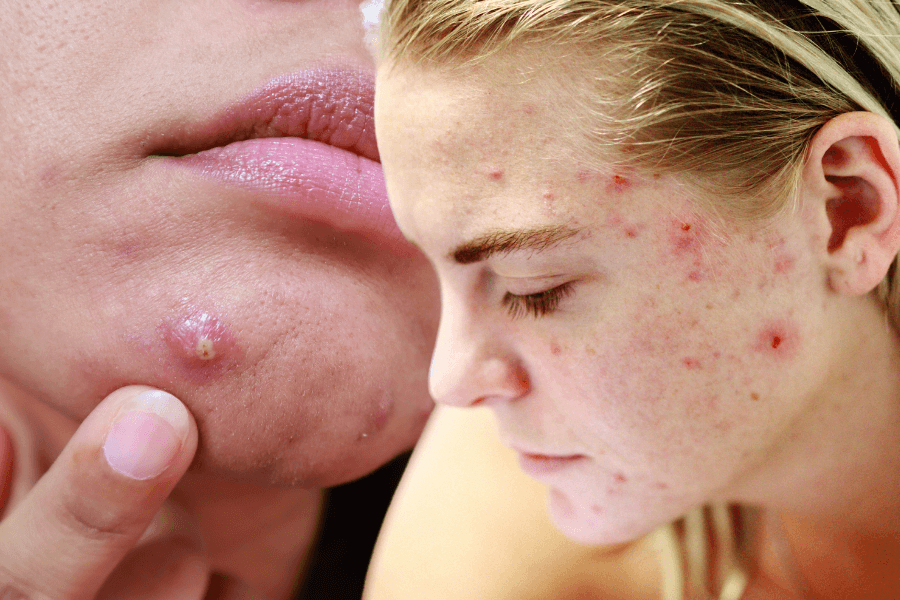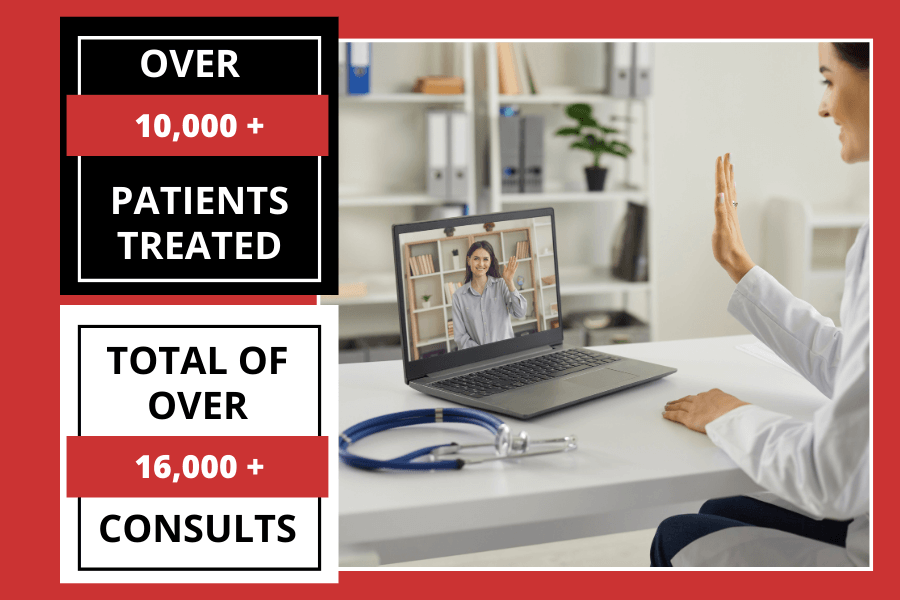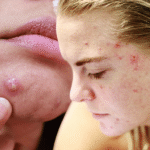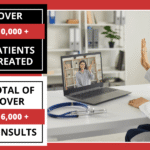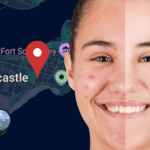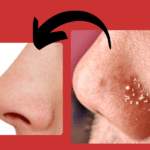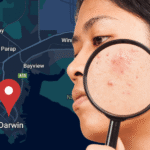
Black pimples on face are one of those things that seem impossible to get rid of. They sit there on your nose, chin, or forehead no matter how much you wash. Most people think they’re dirt stuck in pores and scrub their face raw trying to remove them. Some try those pore strips that rip off a layer of skin. Others steam their face over boiling water like it’s a spa treatment. Nothing seems to work. Here’s the twist – they’re not actually dirt, and they’re not regular pimples either. They’re blackheads, and once you understand what they really are, dealing with them gets a lot easier.
What blackheads actually are
So your pores make oil. That’s normal – it’s called sebum. Sounds gross but everyone produces it. Your skin also sheds dead cells constantly, like thousands per day. Mix those two together in a pore and you get a plug. The pore stays open at the top, air hits it, and boom – it oxidizes and turns dark. Same thing that happens when you bite an apple and leave it out. The inside turns brown when exposed to oxygen.
It looks like dirt embedded in the skin. Nope. Just oil and dead skin reacting with air. That’s why washing harder doesn’t help. You can’t scrub away a chemical reaction.
Blackheads vs pimples – there’s a difference
Pimples happen when the pore closes up completely. Bacteria gets trapped inside, inflammation starts, and you get that red, painful bump. Sometimes with pus that nobody wants to talk about but we’ve all dealt with. Blackheads stay open, so no inflammation or pain. Just annoying dark spots you can see every time you look in the mirror.
There’s also something called sebaceous filaments that everyone confuses with blackheads. They’re tiny dots on your nose, usually grayish or tan colored, that help oil flow through skin. Completely normal. Everyone has them. I used to try squeezing them out with my fingers and they’d come back the next day. Total waste of time and probably damaged my skin in the process.
The way to tell the difference? Blackheads are darker, usually black or very dark brown. Sebaceous filaments are lighter and smaller. Also, blackheads can appear anywhere on your face. Sebaceous filaments mostly show up on your nose.
Why you keep getting them
Your skin doesn’t stop making oil and shedding cells. Ever. Even while you sleep. Sometimes pores get clogged and there’s not much you can do to prevent it completely. But a few things make it worse:
Hormones are brutal. Teenagers get wrecked by this because puberty sends hormones into overdrive. I broke out constantly from age 13 to 17. Couldn’t catch a break. Women get hormonal fluctuations around their period too, which is why some people break out at the same time every month.
Weather matters more than you’d think. Hot humid places make you sweat more and produce extra oil. We know a person who moved to a humid climate for college and their skin freaked out for the first six months. Had to completely change their routine.
If your parents have oily skin, you probably do too. Genetics aren’t fair. Thick makeup and heavy creams clog pores if you don’t remove them properly at night. People learn this the hard way when they start wearing foundation every day. It would take them months to realize they weren’t cleaning it off well enough.
Not washing your face after the gym is asking for problems. Sweat plus oil plus dirt sitting on your face creates the perfect environment for clogged pores. Also, touching your face all day transfers oil and bacteria from your hands. Using harsh scrubs seems like it should help but actually irritates skin and triggers more oil production.
What works (And what doesn’t)
Be cautious of products that promise overnight results—most blackhead treatments take time and consistency to work. But some stuff does work if you’re patient and consistent.
Salicylic acid cleansers get into pores and break up the gunk. It’s oil-soluble, which means it can cut through the sebum and dead skin mixture. Use it every morning. Will take about three weeks to see any difference but it helps. Don’t expect miracles in the first week. Your skin needs time to adjust and respond.
Retinoids make your skin shed faster so pores don’t clog as much. They’re derived from Vitamin A and they’re one of the few ingredients dermatologists actually recommend consistently. Some are over the counter like adapalene, some need prescriptions. Start with a low strength or your face will peel and get irritated. Many make that mistake. They use too much too fast and their skin will look worse for two weeks.
Clay masks suck oil out of pores. Bentonite and kaolin clay work well. Once a week is enough. More than that dries out your skin, which then overproduces oil to compensate. Vicious cycle.
Chemical exfoliants dissolve dead skin without scrubbing. AHAs like glycolic acid work on the surface. BHAs like salicylic acid get into pores. Those grainy scrubs with walnut shells or apricot seeds feel good but irritate skin and can cause micro-tears. Dermatologists hate those things.
If nothing works after a few months, see a dermatologist. They can extract stubborn blackheads safely using proper tools, and may achieve results that are difficult to replicate at home.
Preventing them from coming back
Easier to prevent than treat. That’s the annoying truth.
Wash your face twice before bed. Use an oil cleanser first to remove makeup and sunscreen. Then use a regular cleanser to get everything else. This double cleanse thing is widely recommended because oil cleansers can effectively dissolve sebum and makeup before regular cleansing.. Don’t resist it because it seemed excessive. It’s not. Oil dissolves oil, so an oil cleanser breaks down all the sebum and makeup way better than a regular face wash.
Buy non-comedogenic products. That means they won’t clog pores. Check ingredient lists. Coconut oil is comedogenic despite what beauty bloggers say. So is cocoa butter.
Always wash your face after working out. Sweat plus oil plus dirt sitting on your face creates problems. Even if you’re tired and just want to collapse on the couch. Take two minutes and wash your face. Future you will be grateful.
Exfoliate two or three times a week. Not every day. Your skin needs time to recover between exfoliation sessions. Use a chemical exfoliant with salicylic acid on Monday, Wednesday, and Friday nights.
Change pillowcases regularly. Oils from your face and hair build up on them. Change them twice a week. Some people do it every night but that seems excessive unless you have really oily skin. Also, if you have long hair, tie it back at night so it’s not rubbing oil all over your face.
Get decent sleep, eat reasonably well, manage stress. Easier said than done but your skin shows it when you’re run down. You might notice more breakouts when you’re stressed about work or not sleeping enough. Can’t always control those things but they definitely affect your skin.
When to get professional help
If you’ve tried stuff consistently for two months and nothing’s improving, see a dermatologist. Sometimes blackheads are hormonal or part of another skin issue like PCOS. Doctors can prescribe stronger treatments like tretinoin or do chemical peels that actually work.
You can also consult dermatologists online through teledermatology services such as Acne Express, where dermatologists assess your skin remotely and provide customised treatment plans. Beats waiting three weeks for an appointment and sitting in a waiting room. You talk to actual dermatologists, they look at your skin, and send you customised treatments. Way more convenient than driving across town to a clinic.
Don’t feel bad about seeing a professional. Don’t waste years trying to figure it out yourself when you could have just gone to a dermatologist and saved time and money on products that didn’t work.
Bottom line
There’s no product that clears blackheads overnight. Consistent, evidence-based skincare—using ingredients such as salicylic acid and retinoids—can help improve blackheads over time. Be gentle with your skin instead of scrubbing it raw.
Improvement takes time and consistency. While perfect skin isn’t realistic for most people, many can achieve a noticeable reduction in blackheads and frequency of breakouts with the right approach.
Get help when you need it instead of suffering alone.
Disclaimer: This article is for informational purposes only and does not constitute medical advice, diagnosis, or treatment. The information provided should not be used as a substitute for professional medical advice from a qualified healthcare provider. Teledermatology services have limitations and may not be appropriate for all skin conditions. Some conditions require in-person examination, physical assessment, or procedures that cannot be performed remotely. Always seek the advice of a qualified dermatologist or other healthcare provider with any questions regarding a medical condition. Never disregard professional medical advice or delay seeking it because of information you have read in this article. If you think you may have a medical emergency, call your doctor or emergency services immediately.

